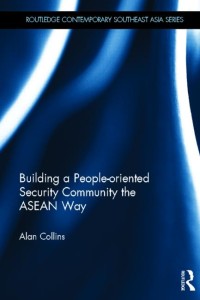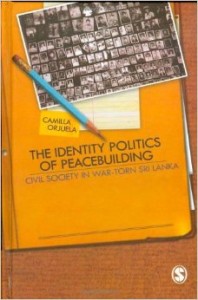
Considering the disparate and interdisciplinary wealth of literature in regard to reconciliation, identity and transitional justice, Aiken’s book is ambitious, yet manages to accomplish what it sets out to do effectively, offering a timely contribution. Following recent trends in political science, he is interested in seeking out the causal mechanisms that lead to reconciliation in divided societies: in this case those of transitional justice. Through a comparative case study of transitional justice processes in South Africa and Northern Ireland Aiken integrates the empirical with a theoretical framework that goes beyond simply listing possible causal mechanisms. This he calls the social learning model of transitional justice, composed of three categories that can be utilized towards reconciliation in divided societies following prolonged conflicts.
In the introduction, Aiken sets out his research design and methodology, highlighting that he will not only introduce the social learning theoretical framework but also apply it through the two case studies using the process-tracing method to establish potential causal paths. He is thoughtful about addressing both his case selection on the dependent variable, as he seeks to use his framework for theory development. Further, his data selection, through primary and secondary sources as well as expert interviews, reflects the demands of the process tracing method, but also a realistic perspective for readers who are more policy oriented.
In the second chapter, Aiken provides an extensive literature review reflective of the academic field he engages with and sets out to connect transitional justice, identity and intergroup reconciliation incorporating an interdisciplinary approach. He spends the first section of the chapter convincing the reader that identity based conflicts, while complicated and difficult to resolve, are also not insurmountable as antagonistic perceptions of the ‘Other’ can be replaced with more positive ones over time. This leads him to a section on reconciliation, which he calls a theoretical concept, an empirical goal, and a transformative process (18-19), achievable through a variety of social learning mechanisms. He goes beyond this by elaborating on five different elements that are considered components of lasting reconciliation (20-23) within the literature. Here, he is careful to limit his ambitions by stressing the lengthy and fluid process of reconciliation depending on transitional justice strategies that are often more time constrained and structured.
In chapter three, Aiken sets out the social learning model of transitional justice based on instrumental, socio-emotional, and distributive learning. Throughout the chapter he not only layers each of these three broader categories with one another but also through a variety of five mechanisms he outlines: positive intergroup contact, transformative dialogue, truth, justice, and the amelioration of material inequalities. The importance of the analysis of these factors resounds as key towards investigating the causal paths between transitional justice and reconciliation. What is impressive is his ability to keep the reader engaged both at a theoretical level but also from a policy perspective, by providing alternatives and examples. This comes through especially from the fourth chapter on, after he introduces his two case studies, the ‘decentralized’ Northern Ireland case as well as the more structured South African case through the TRC. This is followed by a chapter on each of the categories of social learning which he applies to the two case studies in order to provide the reader with empirical data as well as the varied paths of each case which both ultimately led to similar outcomes.
When it comes to instrumental learning, Aiken emphasizes the need for long-term efforts that provide space for intergroup contact, especially in environments with transitional justice institutions with limited mandates. He contrasts this with the decentralized nature of Northern Ireland’s process, which has helped to facilitate a largely bottom-up led approach through diverse civil society as well as governmental actors. However, this also means that an overarching narrative has not been established ultimately leading to a socio-emotional learning that has not advanced intergroup reconciliation in the same way as a more formalized process. Throughout this chapter, it becomes evident to the reader that socio-emotional learning is potentially the most difficult of the categories to institute from theory into practice effectively, in part because it incorporates not only the micro but also the macro levels of society. Finally, the distributive learning chapter explores the different, mostly government-led initiatives that seek to address deep-seated and historically laden inequality between groups. Aiken highlights that structural divisions within society can be more difficult to overcome as individuals often indirectly benefit from them, thus making it more difficult to address and engage in processes of restitution or redistribution.
Aiken is very careful throughout his study about setting out scope conditions such as noting the importance of having a negative peace before transitional justice institutions can create an effect on reconciliation. He further elaborates on this, what he calls ‘permissive conditions’ (48), noting that it is not only the institutions that matter but also elites or entrepreneurs that champion and foster them. One minor critique here is that he could have engaged with such factors and conditions that aid the social learning model in greater detail, perhaps also noting the influence of external actors for example. Nonetheless, the theoretical framework he does develop is inclusive of a variety of mechanisms, ideally layered and intimately connected, that can potentially be employed in order to achieve the ultimate result, intergroup reconciliation. It showcases an awareness of his methodology. Further, it highlights that reconciliation remains an ongoing process itself and doesn’t end with the cessation of outright violence.
This book offers both scholars and practitioners an overview of recent literature in transitional justice and reconciliation, but also a timely contribution of a theoretical framework that can be used in the context of post-conflict societies when instituting policies. Further, it applies the theoretical framework and offers a wealth of empirical data on the transitional justice approaches in Northern Ireland and in South Africa.
Published in Journal of Conflict Transformation and Security (JCTS) Vol. 4 | No. 1-2



